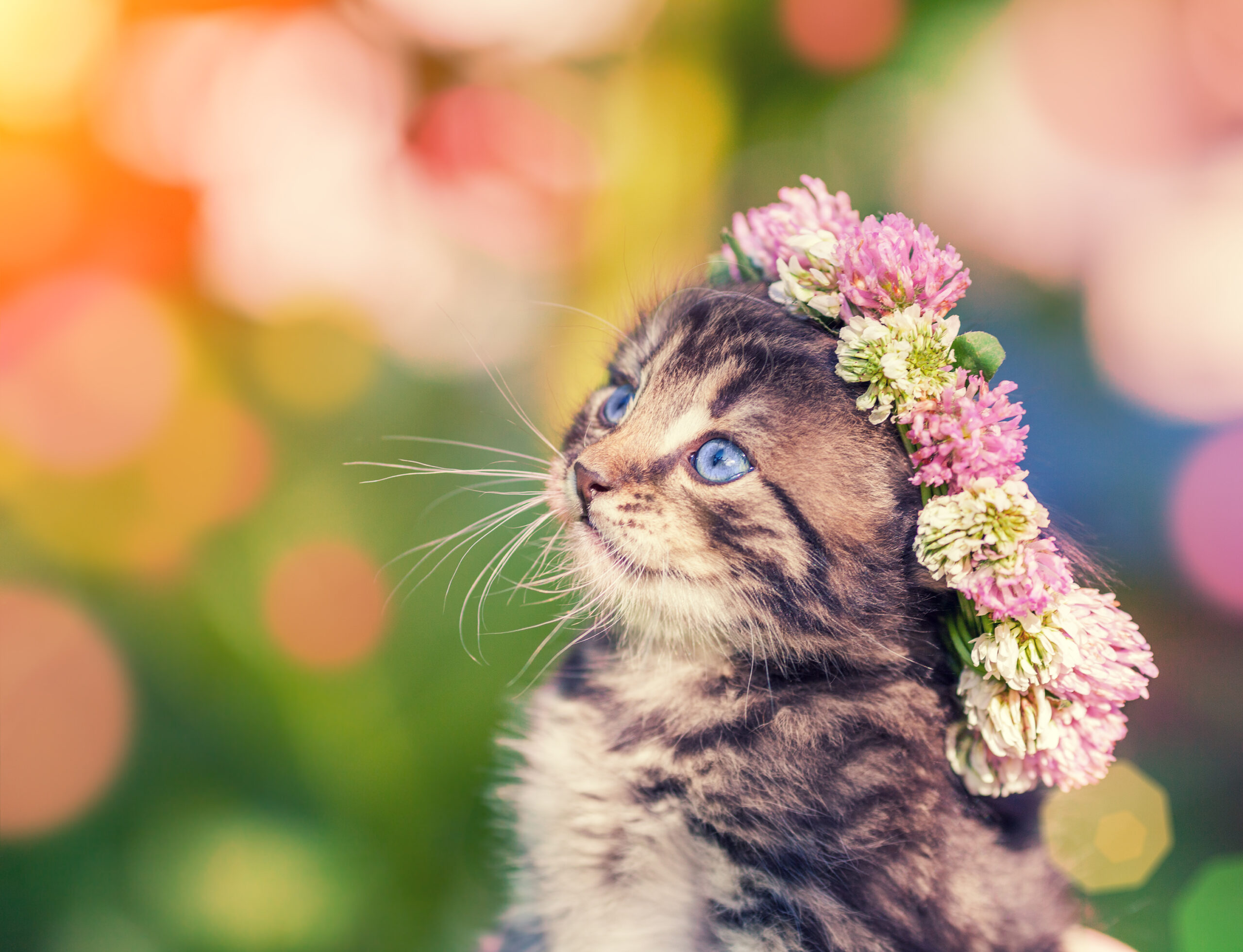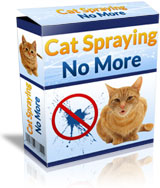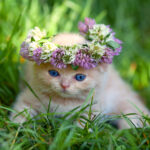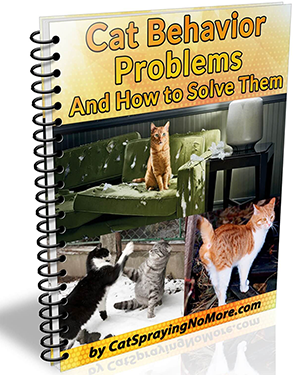jamesdorans
7 Signs Your Cat Needs A Grooming Session

Decoding the Signals: 7 Undeniable Signs Your Feline Friend Needs a Grooming Session
Our feline companions are masters of subtle communication. From the gentle blink of an eye to the rhythmic purr, they have their own unique language. Among the many messages they convey, understanding when your cat needs a grooming session is crucial for their health, comfort, and overall well-being. While some cats are fastidious self-groomers, even the most diligent felines can benefit from a little extra help. Recognizing the signs early can prevent discomfort, matting, skin issues, and even potential health complications. Here are seven undeniable indicators that your beloved cat is due for some pampering:
1. The Tangled Tale: Noticeable Mats and Knots in Their Fur
One of the most obvious and concerning signs that your cat needs grooming is the presence of mats or knots in their fur. These tangled clumps are more than just unsightly; they can be incredibly painful for your cat. Mats typically form in areas where friction is common, such as behind the ears, under the legs, along the back, and near the tail.
The formation of mats begins with loose fur that doesn’t get brushed away. As the cat moves and grooms, this loose fur intertwines with healthy hair, creating small tangles. Over time, these tangles tighten and grow larger, forming dense mats that pull on the skin. This pulling can cause significant discomfort, restricting movement and even leading to skin irritation, bruising, and infections underneath the mat.
Furthermore, mats can trap moisture, dirt, and debris close to the skin, creating a breeding ground for bacteria and parasites. In severe cases, matted fur can even impede blood circulation. If you notice any mats or knots, especially if they are large or close to the skin, it’s a clear indication that your cat needs professional grooming assistance. Trying to remove large, tight mats yourself can accidentally injure your cat, so seeking expert help is always the safest option.
2. An Overabundance of Shedding: More Than the Usual Fluff
While shedding is a natural process for cats, an excessive increase in the amount of fur they are losing can be a sign that they need grooming. Regular brushing helps to remove loose and dead hair, preventing it from being shed all over your home. When this loose fur isn’t removed, it can contribute to matting and also means your cat is likely ingesting more hair during their own grooming sessions, potentially leading to more frequent and larger hairballs.
If you find yourself constantly sweeping up piles of fur, or if your cat’s coat appears thinner or less lustrous than usual, it could indicate that they need help removing the excess dead hair. A thorough brushing session can significantly reduce shedding and improve the overall health and appearance of their coat. For long-haired breeds, regular and consistent brushing is even more critical to manage shedding effectively.
3. A Dull and Lifeless Coat: Losing Their Natural Shine
A healthy cat’s coat should have a natural sheen and vibrancy. When a cat’s grooming needs are not being met, their fur can start to look dull, dry, and even greasy in some areas. This lack of luster can be due to a buildup of dead hair, dirt, and oils on the surface of the coat.
Regular brushing helps to distribute the natural oils produced by your cat’s skin throughout their coat, keeping it healthy and shiny. When these oils aren’t properly distributed, the coat can lose its natural protective barrier, making it more prone to dryness and tangling. A dull coat is a visual cue that your cat isn’t able to effectively groom themselves or that they have an excess of dead hair that needs to be removed through brushing.
4. Excessive Scratching and Licking: Signs of Skin Irritation
While some scratching and licking are normal cat behaviors, a noticeable increase in these activities can indicate skin irritation or discomfort, often linked to inadequate grooming. Mats and tangled fur can pull on the skin, causing itching and irritation. Trapped dirt, debris, and even parasites within the coat can also lead to excessive scratching and licking in an attempt to find relief.
If you observe your cat constantly scratching, particularly in specific areas, or if they are excessively licking, leading to bald patches or inflamed skin, it’s important to consider whether their grooming needs are being met. Addressing any matting or buildup of debris through grooming can often alleviate these skin issues. However, if the scratching and licking persist even after grooming, it’s crucial to consult with a veterinarian to rule out any underlying medical conditions or allergies.
5. Visible Dirt and Debris: A Coat That Needs a Clean Sweep
Cats are generally meticulous about their cleanliness, but sometimes they need our help to keep their coats free of dirt and debris. If you start noticing visible dirt, dust, or even small pieces of litter clinging to your cat’s fur, it’s a sign that they may not be able to groom themselves effectively.
This can be particularly true for older cats, overweight cats, or cats with mobility issues who may find it difficult to reach certain areas of their body. Long-haired cats are also more prone to accumulating outdoor debris in their fur. Regular brushing not only removes loose fur but also helps to dislodge any trapped dirt and keep their coat clean and healthy. In some cases, a bath might also be necessary to thoroughly cleanse their coat, especially if they’ve gotten into something particularly messy.
6. Strong Odor: More Than Just a Feline Scent
While cats have their own natural scent, a strong or unpleasant odor emanating from their coat can be a sign of a grooming issue. Trapped dirt, oils, and even mild skin infections under matted fur can contribute to an unpleasant smell. Additionally, if your cat is having difficulty grooming certain areas, such as around their rear end, it can lead to a buildup of waste and a noticeable odor.
Regular grooming, including brushing and potentially bathing, can help to remove the sources of these odors and keep your cat smelling fresh and clean. If the strong odor persists even after grooming, it’s important to consult with a veterinarian, as it could indicate an underlying health problem.
7. Changes in Behavior: Irritability or Reluctance to Be Touched
Sometimes, the signs that your cat needs grooming are more behavioral than physical. If your usually affectionate cat becomes irritable or reluctant to be touched in certain areas, it could be a sign that they have mats or skin irritation causing them discomfort. They may hiss, swat, or try to avoid being handled, especially in areas where their fur is tangled or their skin is inflamed.
Paying attention to these changes in your cat’s demeanor can provide valuable clues about their grooming needs. If you notice them becoming more sensitive or reactive to touch, gently examine their coat for any signs of matting or skin issues. Addressing these problems through careful grooming can often restore their comfort and their usual loving disposition.
Conclusion: Prioritizing Your Cat’s Grooming Needs
Recognizing these seven signs is key to ensuring your cat remains healthy, comfortable, and happy. Regular grooming is not just about aesthetics; it plays a vital role in preventing matting, reducing shedding, maintaining skin health, and even strengthening the bond between you and your feline companion. The frequency and type of grooming your cat needs will vary depending on their breed, coat length, age, and overall health. However, being vigilant for these telltale signs will help you determine when it’s time to reach for the brush, schedule a professional grooming appointment, or simply dedicate some quality time to pampering your purrfect friend. By understanding their subtle communication, you can proactively address their grooming needs and contribute to their long and fulfilling life.
Cat Boredom Busters: Apartment Edition
Summary
“Cat Boredom Busters: Apartment Edition” emphasizes that even in an apartment, cats can lead stimulating lives. It begins by explaining that cat boredom, stemming from unfulfilled instincts, can lead to destructive behavior, excessive vocalization, overeating, or depression.
To combat this, the article suggests several “boredom busters”:
- Vertical Adventures: Maximizing vertical space with cat trees, wall-mounted shelves, and window perches allows cats to satisfy their desire for high vantage points.
- Interactive Play: Daily play sessions with wand toys, feather teasers, and supervised laser pointers (ending with a physical toy) engage their hunting instincts. Puzzle feeders turn mealtime into a mental challenge, and automatic toys can entertain when owners are busy.
- Enrichment Beyond Play: Providing a variety of scratching posts, using catnip or silvervine, offering “cat TV,” and considering safe outdoor access like leash training or catios all contribute to sensory enrichment.
- Routine and Bonding: A consistent daily routine and quality time spent with the cat are crucial for their security and overall well-being, strengthening the bond between pet and owner.

Guy with his cat on a desk Photo by Yuliya kota:
https://www.pexels.com/photo/cute-cat-smelling-unrecognizable-bearded-man-on-windowsill-at-home-3791595/
The overall message is that by understanding and addressing a cat’s natural needs, apartment dwellers can create a rich and fulfilling environment for their feline companions.
Living in an apartment with your feline friend doesn’t mean they’re destined for a life of snoozing and window-gazing. While the great outdoors might be off-limits, there are countless ways to transform your compact living space into a stimulating wonderland for your cat. Uncovering the best cat boredom busters for apartment cats is key to a happy, healthy, and well-behaved companion.
Understanding Cat Boredom
Before we dive into solutions, let’s understand why boredom is a problem. Cats are natural predators, hardwired for hunting, exploring, and playing. Their ancestors roamed vast territories, stalking prey and defending their space. When these innate instincts aren’t met in a confined environment, boredom can manifest as a range of undesirable behaviors. You might notice your cat engaging in destructive scratching on furniture, excessively vocalizing with persistent meows, overeating out of sheer lack of stimulation, or even showing signs of depression such as lethargy or a lack of interest in their surroundings. A bored cat is often a mischievous cat, and an unhappy one. Recognizing these signs early is crucial for intervening and enriching their lives.
Vertical Adventures: Reaching New Heights
One of the most effective ways to combat boredom in an apartment is to maximize vertical space. Think like a cat: they instinctively love high perches where they can survey their territory, feel secure, and observe the world from a safe vantage point.
- Cat Trees and Condos: These are non-negotiable for apartment cats. Look for sturdy, multi-level cat trees with a variety of textures for scratching posts, cozy cubbies for napping, and diverse perching platforms at different heights. Place them strategically near windows for prime bird-watching opportunities, which can provide hours of passive entertainment. The more levels and hiding spots, the better for encouraging exploration and play.
- Wall-Mounted Shelves and Perches: Go beyond freestanding furniture and create a dynamic vertical playground by installing cat-friendly shelves or perches directly onto your walls. Ensure they are securely fastened to support your cat’s weight and provide easy, accessible paths for them to jump up and down. Some wall-mounted units even come with built-in scratching surfaces, soft pads for lounging, or connecting ramps to create an entire aerial highway for your feline adventurer. This not only provides entertainment but also frees up valuable floor space.
- Window Perches: Simple, affordable, and incredibly popular, a sturdy window perch allows your cat to safely enjoy the view, soak up some warm sunbeams, and observe the fascinating world outside. Choose models that are easy to install and can support your cat’s weight. The constant flow of sights, sounds, and smells from outdoors can be incredibly stimulating for an indoor cat.
Interactive Play: Engaging Mind and Body
Play is crucial for both mental and physical stimulation, mimicking the hunting behaviors they would naturally engage in. Aim for at least two 10-15 minute play sessions daily, ideally around dawn and dusk when cats are most active.
- Wand Toys and Feather Teasers: These are excellent for mimicking prey movement. Wiggle them erratically, hide them behind furniture, and make them dart and pounce. This taps directly into their innate hunting instincts, providing a satisfying “chase and capture” experience. Rotate your toys to keep things fresh and exciting.
- Laser Pointers (with caution!): While undeniably fun, use laser pointers responsibly. Always end a laser pointer session by directing the beam onto a physical toy or treat your cat can “catch” and physically interact with. This prevents frustration from the inability to “capture” their prey and provides a satisfying conclusion to the hunt.
- Puzzle Feeders: Turn mealtime into a stimulating game! Puzzle feeders make your cat work for their food, slowing down eating and providing significant mental stimulation. There are many DIY options using household items, or you can purchase commercially available ones ranging in difficulty. This engages their problem-solving skills and satisfies their foraging instincts.
- Automatic Toys: For times when you’re busy, out of the house, or simply need a break, automatic toys that move unpredictably can keep your cat entertained. Look for ones with different settings, motion sensors, or even remote controls to vary the play experience. Some even dispense treats, adding another layer of engagement.
Enrichment Beyond Play: Engaging the Senses
Beyond active play, there are many ways to enrich your cat’s environment and engage their senses.
- Scratching Posts and Pads: Provide a variety of scratching surfaces (sisal, cardboard, carpet, wood) in different orientations (vertical posts, horizontal pads, angled scratchers) to satisfy their natural urge to scratch. This keeps their claws healthy, stretches their muscles, and helps them mark their territory appropriately. Place them in prominent areas where your cat likes to lounge or scratch.
- Catnip and Silvervine: These natural attractants can provide a burst of euphoric fun for many cats. Use them sparingly as a special treat or to introduce new toys, scratching posts, or carriers. Not all cats respond to catnip, but many respond to silvervine, so experiment to see which your cat prefers.
- “Cat TV”: While not a substitute for human interaction, playing videos specifically designed for cats (featuring birds, squirrels, fish, or other small animals) can capture their attention for a while. There are many options available on streaming platforms.
- Safe Outdoor Access (Leash Training/Catio): If feasible and safe, consider leash training your cat for short, supervised walks in a secure, quiet area. This provides exposure to new scents and sounds. Alternatively, investing in a “catio” (a secure, enclosed outdoor patio or window box) allows your cat to safely experience fresh air and the outdoors without the dangers of free-roaming. Always prioritize safety and ensure any outdoor access is escape-proof and protected from predators.
The Power of Routine and Bonding
A consistent routine provides comfort and security for your cat. Regular feeding times, predictable play sessions, and dedicated cuddle time help your cat feel secure, loved, and understood. Most importantly, simply spending quality time with your cat, whether it’s petting, talking to them, grooming them, or just being in the same room, goes a long way in combating boredom and strengthening your unique bond.
By implementing these cat boredom busters, you can ensure your apartment-dwelling feline enjoys a rich, stimulating, and fulfilling life, transforming your home into their personal kingdom, free from the woes of boredom. What’s your cat’s favorite way to bust boredom?
The Purr-fect Pet: Why Cats Make Great Companions
Are you considering adding a furry friend to your family? While dogs often steal the spotlight, cats have a lot to offer as well. Let’s take a closer look at why cats make fantastic pets.
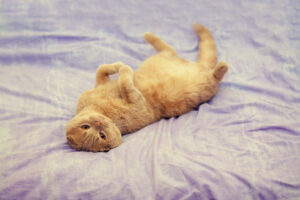
**Low Maintenance, High Affection**
Unlike dogs, cats don’t require daily walks or constant attention. They are content to entertain themselves, making them an ideal choice for busy individuals or families. Plus, when they do seek out affection, it’s on their terms, adding an element of mystery and charm to their companionship.
**Cleanliness and Health Benefits**
Cats are meticulous groomers, keeping themselves tidy and odor-free. Their purring has been linked to therapeutic healing capabilities, reducing stress and promoting relaxation. The act of petting a cat can have a calming effect, potentially contributing to lower stress levels and improved heart health.
**Companionship and Independence**
Cats are known for their intuitive nature and ability to provide comfort when needed. They make great companions for people of all ages, offering a sense of calm and stability. Additionally, their independent nature allows them to thrive in a variety of living situations, making them a versatile pet choice.
**Teaching Responsibility**
For families with children, owning a cat can be an excellent way to teach responsibility. Involving kids in the care and nurturing of a pet can instill valuable life lessons and create lasting bonds.
In conclusion, cats are low-maintenance, clean, and provide numerous health benefits. Their unique blend of independence and companionship make them an excellent choice for individuals and families alike. Whether you’re a seasoned pet owner or considering your first furry friend, a cat could be the purr-fect addition to your home.
*Resources:*
– The Joys of Owning a Cat – HelpGuide.org – Source
The Ultimate Guide to Cat Training for Men: Tips and Tricks for a Well-Behaved Kitty
20 Apartment-Living Problems with Cats
For many years my cat and I lived in an apartment and the list of 20 Apartment-Living Problems with Cats that I noticed when doing so is listed below.
Limited Space and Exercise:
- Lack of vertical space: Apartments lack the climbing opportunities cats crave, leading to boredom and restlessness.
- Not enough playtime: Confined spaces make tiring cats out difficult, resulting in destructive behaviors like furniture scratching.
- No access to the outdoors: Outdoor enrichment like chasing bugs or sunbathing becomes unavailable, which can be frustrating for cats.
Litter box and Hygiene:
- Litter box odor: Confined apartments can amplify litter box smells, especially for single-litter-box households. With the right kitty litter and daily cleaning of it became a lesser problem.
- Litter box placement limitations: Finding a discreet and convenient location for a litter box in a small space can be challenging.
- Difficulty maintaining litter box cleanliness: Frequent litter changes and cleaning might be necessary due to closer proximity to living areas.
Noise and Neighbor Issues:
- Meowing: Apartment walls can amplify cat vocalizations, leading to complaints from neighbors or feelings of self-consciousness.
- Running and jumping: Active cats in small spaces can create noise from running, jumping, and playing, disturbing neighbors. The Zoomies.
- Scratching on doors and walls: Lack of appropriate scratching posts might lead cats to scratch on furniture or doors, causing damage and noise.
Safety and Security:
- Open windows and balconies: Accidental falls from windows or balconies pose a serious danger to apartment-dwelling cats.
- Escape risk: Open doors or unlocked windows can lead to escapes, with the city environment posing dangers to lost cats. I did live in New York City bough of Queens near a major blvd.
- Poisonous plants: Many common houseplants are toxic to cats, requiring careful plant selection and placement. I got a list and my the previous post mentioned the plants.
Socialization and Enrichment:
- Loneliness: Cats left alone for long periods in apartments can become lonely and stressed. Nor all my apartments my one in NYC had other cats, but male cats always don’t get along.
- Lack of cat-friendly interactions: Limited exposure to other animals or people can make socialization difficult.
- Mental stimulation issues: Apartment life can restrict opportunities for hunting, foraging, and exploring, leading to boredom.

Orange Maine Coon by Thirdman from Pexel
Additional issues:
- Heat regulation: Cats can struggle to regulate their temperature in small, poorly-ventilated apartments.
- Traveling with cats: Moving apartments or going on trips can be stressful for cats due to changes in environment. Note this is also if you live in a house.
- Pet fees and restrictions: Some apartment buildings have pet fees or restrictions, adding financial and logistical hurdles.
- Finding cat-friendly apartments: Finding an apartment with suitable amenities and policies for cats can be challenging. It does take longer on both Craigslist and other online classifieds and apartment websites, I had to skip more then half of them because they would say no pets.
- Balancing cat needs with apartment living: Accommodating a cat’s natural instincts and needs within the limitations of apartment life can be a constant negotiation.
Remember, these are just some common problems, and the specific challenges will vary depending on individual cats and apartment situations.
Understanding the Safety of Carnations for Your Feline Friends
The Best Litter Box for Your Feline Friend: A Buyer’s Guide
Introduction to the Best Litter Box for Your Feline Friend: A Buyer’s Guide
Cats are one of the most popular pets in households around the world. They bring joy, love and companionship into our lives. However, taking care of a cat also comes with responsibilities such as providing them with food, shelter, exercise, grooming, and proper sanitation. One important aspect of maintaining your feline friend’s health is by choosing the right litter box. In this article, we will guide you through everything you need to know about selecting the best litter box for your cat.
The Importance of Choosing the Right Litter Box
Choosing the correct litter box can make all the difference when it comes to keeping your home clean and odor-free while ensuring that your cat has an appropriate place to do their business. The wrong type or size of litter box may result in accidents outside of the box, which can be frustrating for both you and your pet. Additionally, if the litter box is not kept clean regularly, it can lead to health problems for your cat. Therefore, it is essential to choose a litter box that suits your cat’s needs and preferences.
Types of Litter Boxes and Their Features
There are several types of litter boxes available on the market today. Each type has its unique features, advantages, and disadvantages. Here are some common types of litter boxes:
1. Traditional Open Top Litter Boxes – These are the most basic type of litter boxes and come in various sizes and shapes. They have an open top design, which makes them easy to access and clean.
2. Covered Litter Boxes – As the name suggests, these litter boxes have a lid or cover that helps contain the smell and mess. They come in different styles, including hooded and domed designs.
3. Self Cleaning Litter Boxes – These litter boxes use technology to automatically rake waste away from the litter and dispose of it. Some models even flush the waste like a toilet.
4. Sifting Litter Boxes – These litter boxes have a sifter at the bottom that separates clumps from the rest of the litter. This feature allows you to remove only the soiled litter, making it easier to keep the box cleaner.
5. Multiple Cat Litter Boxes – If you have more than one cat, you may want to consider getting multiple litter boxes. It is recommended to provide one litter box per cat plus one extra.
Top 5 Recommended Litter Boxes for Cats
Now that you understand the different types of litter boxes available, let us take a look at five highly recommended options for cats:
1. PetSafe ScoopFree Ultra Automatic Self Cleaning Cat Litter Box
This self-cleaning litter box uses disposable cartridges that last up to three weeks before they need replacing. It cleans itself after every use, leaving behind fresh, clean litter for your cat.
2. PetSafe Simply Clean Hooded Cat Litter Pan
If you prefer a traditional open top litter box, then this option might be perfect for you. Its large size accommodates larger cats comfortably, and the high sides help prevent spills and tracking.
3. Nature’s Miracle Dual Chamber Corner Litter System
For homes with limited space, this corner litter system is ideal. It has two chambers, each with its own entrance, allowing you to separate male and female cats or just give your cat more privacy.
4. Omega Paw Roll’n Clean Self Cleaning Litter Tray
Unlike other automatic litter boxes, this model does not require electricity or batteries. Instead, it relies on a rolling mechanism that pushes waste into a removable tray for easy disposal.
5. Modkat XL Modern Litter Box
Designed with style and functionality in mind, this modern litter box looks sleek and stylish in any room. Its tall walls help reduce litter scatter and provide ample coverage for larger cats.
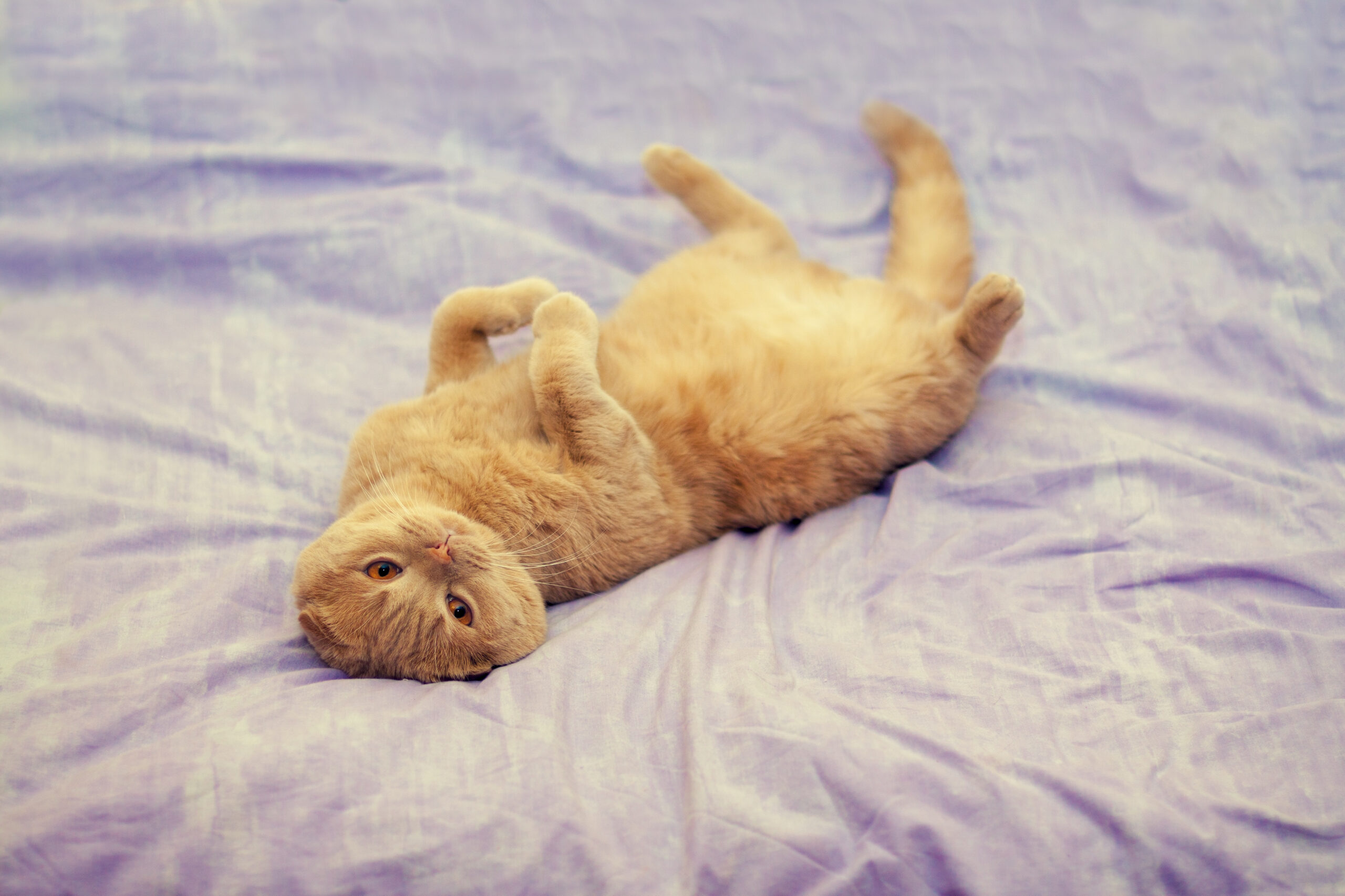
Conclusion: Making an Informed Decision
Selecting the best litter box for your cat requires careful consideration of factors such as your cat’s age, size, habits, and personal preference. You should also think about how often you plan to scoop the litter, whether you prefer automated or manual cleaning, and the amount of space available in your home. By considering these factors and evaluating the pros and cons of each type of litter box, you can make an informed decision that keeps everyone happy and healthy.
Need a guide on how to keep your cat going in there little box check out this article
5 Common Cat Behaviors and How to Understand Them
Cats are fascinating creatures that can be mysterious at times. They have their own unique personalities, quirks, and behaviors that can leave us scratching our heads in confusion. In this article, we will explore some of the most common cat behaviors and how you can understand them better.
Introduction to Common Cat Behaviors
One thing is for sure – cats are not dogs! While they may seem aloof or independent, cats actually crave attention from their human companions. They just show it differently than dogs do. Cats need love, affection, playtime, and mental stimulation to thrive. When these needs aren’t met, they might engage in certain behaviors as a way to communicate with us.
Understanding Aggression in Cats
Aggressive behavior in cats can be scary and confusing. It’s important to remember that aggression isn’t always intentional; sometimes it’s simply a reaction to fear or discomfort. If your cat seems agitated or defensive, try to identify any triggers that might be causing the behavior. For example, if your cat hisses when you approach her while she’s eating, it could be because she feels threatened by your presence. Try giving her space during mealtimes and avoid sudden movements around her.
Exploring the Meaning of Meowing and Other Sounds
Meowing is one of the most common sounds that cats make, but did you know there are different types of meows? A loud, high-pitched meow might mean your cat wants food or water, while a soft, gentle meow might indicate that she wants attention or affection. Pay close attention to the tone and context of your cat’s meows to better understand what she’s trying to tell you.
The Importance of Scratching and Clawing
Scratching and clawing are natural behaviors for cats, but they can also cause damage to furniture and other household items. Instead of punishing your cat for scratching, provide her with a designated scratching post or pad. This will give her an appropriate place to sharpen her claws and satisfy her instinctual urge to mark her territory.
Toilet Training Your Cat: Litter Box Basics
Litter box training is essential for keeping your home clean and preventing accidents. Make sure to choose a litter box that’s easy for your cat to access and keep it clean and well-maintained. You should also consider the type of litter you use – some cats prefer clumping litter, while others like non-clumping litter. Experiment with different options until you find one that works best for your cat.
Playtime with Your Feline Friend
Playtime is an important part of your cat’s daily routine. Not only does it provide physical exercise, but it also helps to mentally stimulate your cat. Toys such as laser pointers, feather wands, and puzzle toys can help to engage your cat’s hunting instincts and keep her entertained.
How to Deal with Anxiety and Stress in Cats
Anxiety and stress can manifest themselves in many ways in cats, including excessive grooming, hiding, or aggressive behavior. To reduce anxiety and stress levels, create a calm environment for your cat. Provide her with plenty of places to hide and sleep, such as cardboard boxes or cozy beds. You can also use pheromone sprays or diffusers to help soothe your cat’s nerves.
Healthy Eating Habits for Your Cat
A balanced diet is crucial for your cat’s overall health and wellbeing. Choose a reputable brand of cat food that meets all of your cat’s nutritional requirements. Avoid feeding your cat table scraps or people food, which can lead to obesity and other health problems.
Brushing, Bathing, and Grooming Tips
Regular brushing and bathing can help to keep your cat’s fur clean and healthy. Brush your cat weekly to remove loose hair and distribute skin oils throughout her coat. Bathe your cat only when necessary, using a mild shampoo formulated specifically for cats.
Socializing Your Cat with Other Pets and People
While cats are often thought of as solitary animals, socialization is still important for their development. Introduce your cat slowly to new pets or people, providing plenty of positive reinforcement and treats. With time and patience, your cat can learn to tolerate and even enjoy the company of others.
In conclusion, understanding common cat behaviors can help us to build stronger relationships with our feline friends. By meeting their basic needs and providing them with opportunities for play, exercise, and mental stimulation, we can ensure that our cats live happy and fulfilling lives.
Training Your Cat: 5 Easy Steps to a Well-Behaved Feline Friend
Do you ever feel like your cat is driving you crazy with their bad behavior? Scratching furniture, jumping on counters, and ignoring commands are common issues that many cat owners face. But did you know that cats can be trained just like dogs? It’s true! With the right approach, you can teach your feline friend to behave well and listen to your commands. In this article, we will explore five easy steps to training your cat for a better relationship between you and your furry companion.
Introduction to Cat Training
The first step in training your cat is understanding their nature. Cats are independent creatures who prefer to do things on their terms. They also have a strong sense of curiosity and may get into trouble if they aren’t given enough stimulation. To start training your cat, you need to establish a bond of trust and respect. This means setting boundaries and being consistent with your actions.
The Importance of Consistency in Cat Training
Consistency is key when it comes to training your cat. You must always follow through with what you say and do. For example, if you tell your cat not to jump on the counter, you must consistently correct them every time they do so. If you let them get away with it sometimes, they won’t take you seriously. Additionally, you should always reward good behavior and ignore bad behavior. This will help your cat understand what is expected of them.
Reward-Based Training for Cats
Reward-based training involves using positive reinforcement to encourage good behavior. Whenever your cat does something good, such as sitting on command or using the litter box, give them a treat or praise them. This will help them associate good behaviors with rewards and make them more likely to repeat those behaviors in the future. On the other hand, you shouldn’t use physical punishment or scolding, as these methods can cause fear and anxiety in your cat.
Common Behavior Problems and How to Address Them
There are several common behavior problems that cats exhibit, including scratching furniture, biting, and aggression towards other animals or people. To address these issues, you should first identify the root cause of the problem. For instance, if your cat is scratching furniture because they don’t have a suitable scratching post, provide them with one. Similarly, if your cat is aggressive towards other pets or people, you may need to desensitize them by exposing them gradually to new situations.
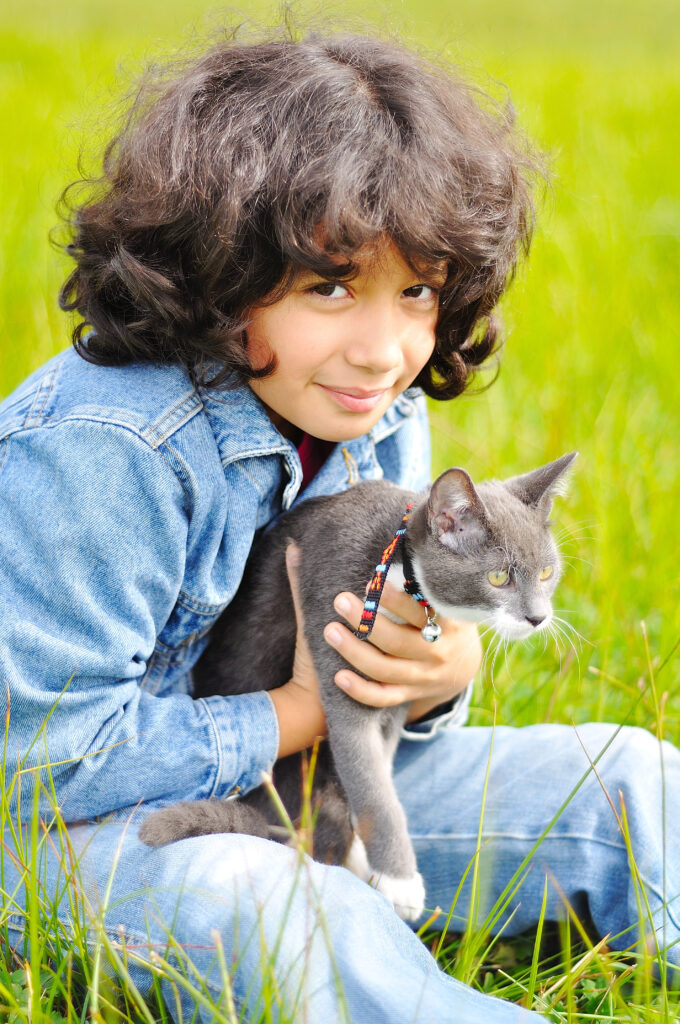
Tips for Socializing Your Cat with Other Animals and People
Socialization is important for all pets, including cats. By introducing your cat to different environments and social settings, you can help them become more confident and comfortable around others. Start by taking your cat out for walks on a leash or letting them interact with friendly dogs or other cats. You can also invite friends over to meet your cat and offer treats to help them associate visitors with positivity.
Maintaining a Healthy Diet and Exercise Routine for Your Cat
A healthy diet and exercise routine are essential for keeping your cat happy and healthy. Feeding your cat high-quality food and providing them with plenty of water will ensure that they receive the nutrients they need. Additionally, regular playtime and exercise sessions can help prevent obesity and boredom. Consider investing in toys and puzzles that challenge your cat mentally and physically.
Understanding Feline Body Language and Communication
Finally, it’s crucial to understand how your cat communicates with you. Pay attention to their body language, vocalizations, and facial expressions, as they can reveal a lot about how they’re feeling. For example, a relaxed open mouth and soft eyes indicate that your cat is content, while tense muscles and narrowed pupils could mean that they’re stressed or anxious. Learning to read your cat’s signals can help you respond appropriately to their needs and build a stronger connection with them.
Basic Grooming Needs for Your Cat’s Wellbeing
Grooming isn’t just about making your cat look pretty; it’s an essential aspect of their overall health and wellness. Regular brushing helps remove loose hair and dander, which can reduce shedding and improve air quality in your home. Brush your cat weekly or biweekly depending on their coat length, and trim their nails regularly to avoid overgrowth and discomfort. Finally, clean your cat’s teeth daily or at least twice a week to maintain dental hygiene.
In conclusion, training your cat doesn’t have to be difficult or stressful. By following these simple tips and techniques, you can create a loving and mutually beneficial relationship with your feline friend. Remember to be patient, consistent, and kind, and you’ll see improvements in your cat’s behavior in no time.
The Best Ways to Keep Your Cat Healthy and Happy
Are you ready to learn the best ways to keep your cat healthy and happy? Cats are fascinating creatures that can bring so much joy into our lives. However, as a pet owner, it’s essential to understand how to provide proper care for them. In this article, we will cover everything from understanding your cat’s behavior to training them to follow basic commands. Let’s get started!
Understanding Your Cat’s Behavior
One of the most crucial aspects of keeping your cat healthy and happy is understanding their behavior. Cats have unique personalities, and they may exhibit different behaviors depending on their mood or environment. For instance, some cats love attention while others prefer solitude. By understanding what makes your cat tick, you can create an ideal living space for them.
Providing Proper Care for Your Feline Friend
Another critical aspect of caring for your cat is providing them with the necessary nutrition, grooming, and exercise. A balanced diet rich in protein and fatty acids is vital for maintaining your cat’s overall health. Regular brushing and bathing also help to keep your cat clean and comfortable. Additionally, providing plenty of opportunities for playtime and exercise helps to prevent boredom and obesity.
Keeping Your Cat Healthy with Regular Check-Ups and Vaccinations
Regular check-ups at the vet are imperative for ensuring your cat remains healthy. During these visits, your veterinarian will examine your cat’s teeth, ears, eyes, and other parts of their body to detect any potential issues early on. They will also administer vaccines to protect against common feline illnesses such as rabies and distemper.
Training Your Cat to Follow Basic Commands
Finally, teaching your cat to obey basic commands like “sit” and “stay” can be beneficial for both of you. Not only does it show who’s boss, but it also provides structure and routine for your furry friend. With patience and consistency, you can train your cat to respond to your commands without hesitation.
In conclusion, keeping your cat healthy and happy requires effort and dedication. Understanding their behavior, providing proper care, regular check-ups, and training are all integral components of being a responsible pet owner. Remember, your cat depends on you for their wellbeing, so make sure to give them the best life possible!
